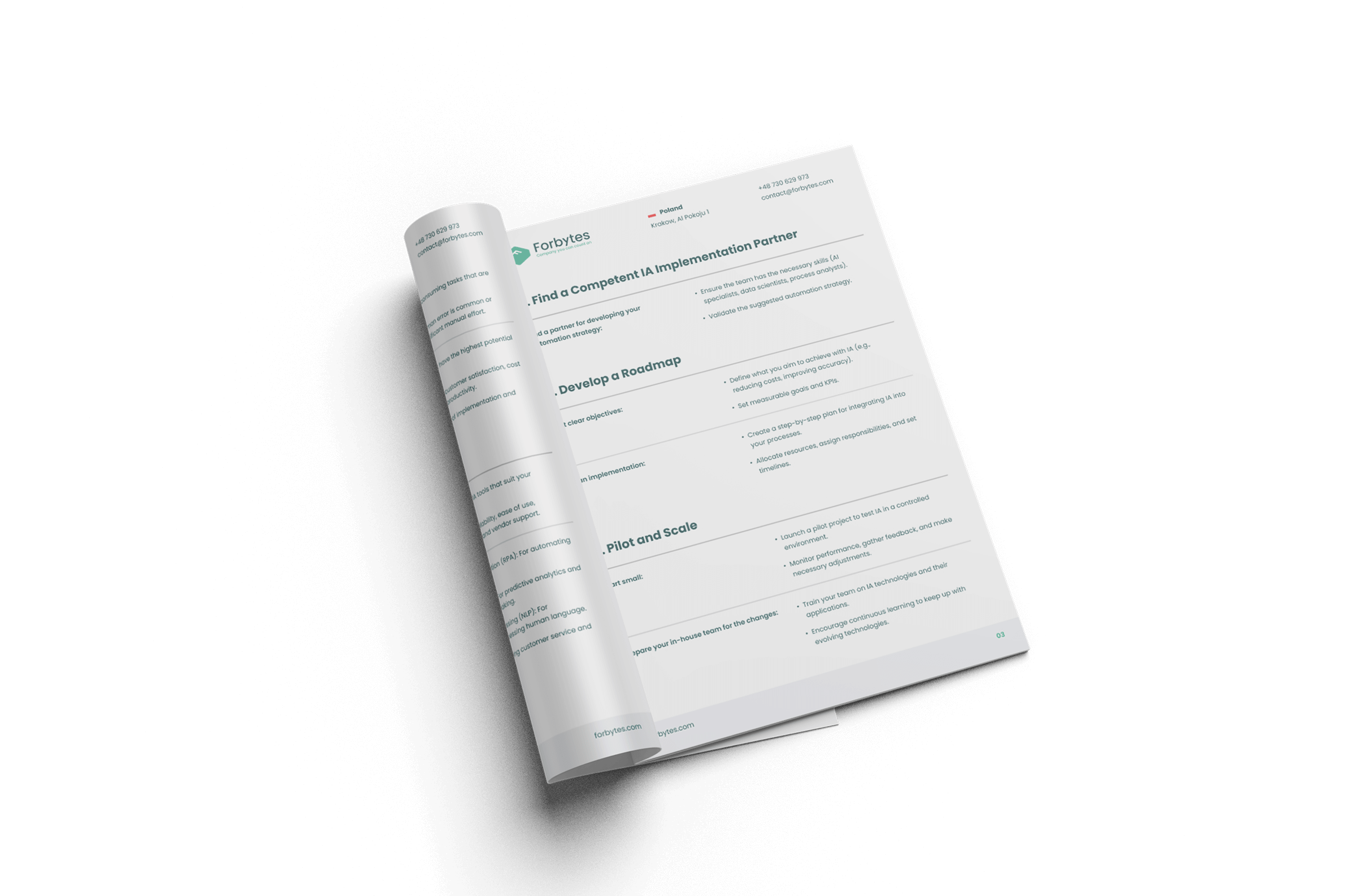Imagine this: you built your business on a solid foundation of technology, and for years, it served you well. But over time, that once-reliable system has started to show its age. Processes are slower, customer demands have evolved, and your team struggles to keep up. Sound familiar?
Legacy systems often help businesses get off the ground. But as companies grow and industries transform, these outdated solutions and the existing systems they rely on can start to hold progress back. Rather than starting from scratch, legacy system modernization offers a way to upgrade your software, keeping your technology aligned with today’s needs and responsive to tomorrow’s challenges.
Legacy system modernization is more than an upgrade; it’s a strategic move that can reduce operational bottlenecks and make room for innovation. Yet 74% of organizations have started a modernization project and failed to complete it.
To avoid becoming part of that statistic, you need a thoughtful, well-planned approach. In this article, we’ll explore why software modernization approaches matter and share practical strategies to refresh outdated tech, helping set your business up for long-term success.
What Is Legacy System Modernization?
Legacy system modernization is the process of upgrading outdated software, infrastructure, and applications to enhance efficiency and functionality. It’s about bringing old systems and the existing systems they depend on up to speed with the latest technology. Legacy systems refer to older technologies still in use that may no longer meet current business needs or integrate easily with modern solutions. It’s about bringing old systems and the existing systems they depend on up to speed with the latest
Around 72% of executives say their legacy platforms hold them back, leading to productivity drops and traffic spikes. Replacing legacy systems with more scalable and efficient technologies is often seen as a strategic move to support long-term growth. The reasons for modernizing legacy systems vary.
Some businesses seek greater scalability and faster deployment, while others want to fix product flaws, address security risks, or resolve integration issues. Many also focus on improving the user experience to meet today’s demands.
For many organizations, legacy system modernization is a more cost-effective choice than rebuilding software from scratch. But that’s not the only benefit; there are several other advantages to upgrading existing systems, which we’ll dive into shortly.
Why Do Businesses Go for Legacy System Modernization?
As businesses grow and technology changes, older legacy systems can start to hold them back. From costly maintenance to security risks, these outdated systems often become more of a burden than a benefit. Modernizing these systems ensures they continue to meet evolving business needs and support future innovation.
Modernizing legacy systems not only tackles these issues but also opens up opportunities for growth and innovation. Here’s why more businesses are choosing to make the move to modernize:
Challenge 1: High maintenance costs
Legacy systems need constant and expensive maintenance to keep up with changing business needs. Outdated software is difficult to update. Most upgrades only fix bugs or compatibility issues, without adding new features. Modern systems, especially cloud-based ones, are cheaper to maintain. They also offer room for innovation and implementation of modern technologies and encourage legacy system modernization.
Challenge 2: Integration issues
Legacy systems often rely on outdated communication methods. This makes integrating with other software difficult. As a result, data silos and inefficiencies are common. In contrast, modern systems are designed for integration. They allow seamless data exchange and enable faster decision-making.
Challenge 3: Unreliable performance
Legacy systems often crash and struggle to scale with growing demand. They are also hard to maintain and adapt. Modernizing these systems can improve their reliability and scalability. This leads to smoother operations and better performance. Additionally, legacy system modernization enhances system security.
Challenge 4: Security and compliance risks
Old systems lack proper security features. This puts businesses at risk of cyberattacks and compliance issues. Modern systems, especially cloud-based solutions, include built-in security measures like encryption. These features help companies protect their data and stay compliant with regulations.
Challenge 5: Skill shortage
As legacy systems become outdated, finding skilled professionals to maintain them becomes harder. Modernizing these systems gives companies access to a larger talent pool. It also helps them stay competitive in a fast-paced market.
See how many challenges can be solved with legacy system modernization. Now, let’s focus on the real benefits you’ll gain by upgrading your software.
How You Can Benefit from Legacy System Modernization
Modernizing legacy systems isn’t just about replacing old applications – it’s about giving them a fresh start to meet today’s needs and standards. By revitalizing your legacy systems, you unlock a range of benefits that can help your organization stay competitive and efficient and ensure steady business growth. Here’s how:
Improved performance and efficiency
Your business is growing fast – from 100 users to over a million in no time. But there’s a problem: your servers can’t keep up. Can you afford the risk of your business slowing down or crashing? Of course not.
Modernizing your system can supercharge your applications, leading to faster response times and a smoother user experience. With modernization, performance drops or traffic spikes won’t threaten your system.
Enhanced security and compliance
Upgrading your security and ensuring compliance with industry standards helps reduce the risk of breaches and avoid costly issues later.
For example, an e-commerce business modernizing its legacy system can better protect customer payment info by using secure encryption and meeting PCI DSS standards. This not only reduces the risk of data breaches but also prevents fines and maintains customers’ trust,
Better user interface and experience (UI/UX)
Revamping the interface and overall user experience can boost customer satisfaction, making systems easier and more enjoyable to use.
For example, an e-commerce site that modernizes its checkout process can create a smoother, faster experience for customers, reducing cart abandonment and improving conversion rates.
Cost savings
Modernizing your systems helps you save in the long run by cutting maintenance costs and improving hosting.
For example, if your business still relies on an outdated inventory management system, it’s likely to cost you more than you think. Upgrading would lower maintenance costs and boost productivity by speeding up the entire process.
Ready to revitalize your systems and see these benefits in action? Let’s explore how legacy system modernization can give your business a competitive edge with the Forbytes team.
Top 7 Strategies for Modernizing Legacy Systems
Modernizing legacy applications can take different forms, based on your organization’s needs and resources. The best approach depends on your app’s current state, budget, and goals. Here are some common legacy system modernization approaches:
- Encapsulating: You can reuse the core parts of a legacy application by wrapping its data and functions, making them accessible through an API. It’s a good choice if the legacy app has well-written code, high business value, and still works well.
- Rehosting: You can move your legacy application to a new environment with minimal code changes, often reusing much of the existing code. This is a quick solution, but it doesn’t fully modernize the system.
- Refactoring: This strategy can improve the code structure for better performance and easier maintenance without changing core functions. This makes the app more efficient without any major changes to its architecture.
- Replatforming: This approach involves shifting your application to a new platform or infrastructure for better performance and scalability, requiring some code changes.
- Re-architecting: You can redesign your app’s structure to meet modern standards, often done in phases to address architectural issues step-by-step.
- Rebuilding: You can rewrite a legacy app from scratch in a cloud-native environment. This is ideal if the app’s purpose is still valuable. While time-consuming and risky, it results in a more flexible, high-performing system with lower costs.
- Full replacement: This strategy involves entirely replacing outdated systems, giving you a fresh start. But this can cause temporary disruptions.
Each legacy modernization strategy has its benefits. Choosing the right one depends on what you want to achieve and the specific challenges of your legacy system. Ultimately, legacy system modernization approaches provide a pathway to improve performance, reduce risk, and align technology with current and future business goals.
Legacy System Modernization: Simple Steps to Success
It’s easy to think that modernizing a legacy system is too complex to handle. If you feel uncertain or still have many questions, don’t worry – we’ve broken it down into simple steps to guide you through the process.
Step 1: Evaluate your legacy system
The need for modernizing legacy applications often stems from issues related to technology, architecture, or functionality. To begin, assess your legacy system and identify areas that need improvement. Start by asking these questions from a business perspective:
- Does my app meet current needs?
- Does my software deliver enough value?
- Can my app keep up with changes?
- Next, from an IT perspective, consider:
- Is it expensive to maintain my app?
- Is it too complicated to manage?
- Is it hard to support or maintain compliance?
If you find any of these problems, it’s time to think about modernizing your legacy system.
Step 2: Identify core issues
Once you’ve completed the initial assessment, it’s time to focus on the specific issues causing inefficiencies in your system. Identify these problem areas to understand what needs improvement and what’s working well.
By understanding the strengths and weaknesses of your current setup, you can make more informed decisions. This will help you choose the right modernization approach for your unique challenges. With a clear plan, you can prioritize effectively and ensure a smooth, successful transformation.
Step 3: Choose your strategy
Once you’ve decided to modernize a legacy application and identified the key issues, the next step is choosing the right approach. We outlined seven main modernization strategies above, each with varying levels of complexity, risk, and impact. These options range from simple to complex, so you can pick the one that best fits your needs and goals.
Step 4: Prioritize flexibility
Legacy software often has a monolithic design. This can make upgrades challenging. Most applications have a lifespan of around 6-8 years. However, businesses face constant changes driven by the market, consumer needs, and economic shifts.
To stay competitive, you should build with flexibility and agility in mind. This allows your business to adapt quickly to today’s fast-paced landscape. The modernization process plays a key role in enabling this adaptability by upgrading outdated systems to support more responsive and scalable operations.
Step 5: Get the right partner
Many internal teams simply don’t have the skills needed to modernize legacy systems, which is why this task often gets put on the back burner. Modernization requires ongoing training and resources that many companies just don’t have.
Partnering with a technology expert is often the best solution. It helps you speed up time to market and ensures strong results – both now and in the long run.
Ready to modernize your legacy system? Contact our team, and we’ll guide you through a successful transformation.
How Forbytes Supports Legacy Application Modernization
Legacy system modernization can be complex, time-consuming, and risky, but the rewards make it worth the effort. More and more businesses strive for digital transformation to stay ahead of the pack.
To meet the demands of today’s digital landscape, organizations need to move away from outdated software. Modernizing core technologies is essential. Success depends on viewing modernization as an ongoing process, not a one-time project. For this reason, having an expert team can make all the difference.
At Forbytes, we handle every step of legacy system modernization. We start by evaluating your current system and building a solid strategy. Then, we will redevelop your product using the latest technology and architecture solutions.
Contact us today to select the most appropriate modernization strategy and upgrade your legacy system with the latest technologies.











